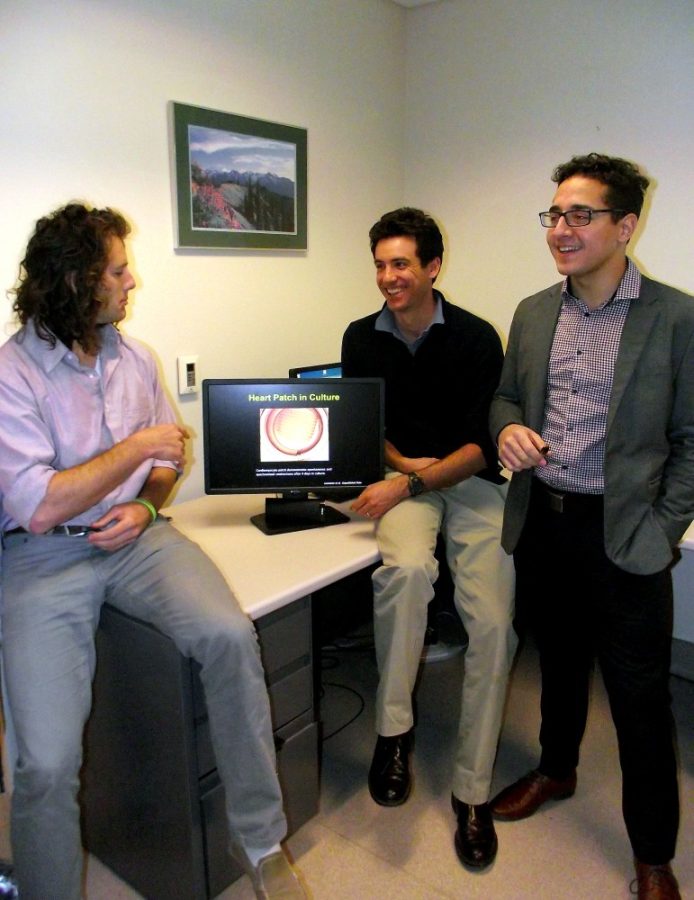The approach is simple: Drop a sample of blood cells into an acid bath and you get back a sample of stem cells, according to a study led by Japanese scientist Haruko Obokata published last month in Nature.
To some, the results of the study sound too good to be true. The paper is currently being reviewed by a research institution in Japan regarding some of the images used in the publication. Authors of the article have since submitted a correction to Nature saying the results of their study are still authentic.
Should the results of the study pass the scrutiny of the review panel, they could be groundbreaking for stem cell researchers around the world, including those here at the UA.
“Stem cells are sort of the mother of all cells,” said David T. Harris, an immunobiology professor who researches how stem cells can be used to engineer biological tissue.
The two most common places to collect stem cells have been from umbilical cord blood, which contain embryonic stem cells, and adipose tissue, which contains adult stem cells, Harris said. By freezing these cells, they can be saved for later use in case the donor needs treatment that requires tissue regeneration, he added.
The new study, however, introduces a relatively simple way to derive stem cells, not just collect them. The researchers of the study refer to these derived cells as stimulus-triggered acquisition of pluripotency cells, or STAP cells for short.
“It might be an easy way to make them, but it doesn’t solve the real problem of making pluripotent stem cells,” Harris said. “The real problem is it’s damn expensive because you can’t use those cells in patients directly.”
As stem cell research transitions from being centered around cancer treatment and more into regenerative medicine, Harris said, researchers have focused on the “big three” disease types: cardiovascular, neurological and orthopedic — all areas of concern for UA researchers.
Among these researchers is Dr. Zain Khalpey, director of Mechanical Circulatory Support, Health Transplant and Translational Research at the UA’s Sarver Heart Center and practicing cardiothoracic surgeon at the University of Arizona Medical Center.
Khalpey’s stem cell research focuses on the metabolic makeup of stem cells and how their functional integrity changes when they are integrated into a patient’s body.
“What really determines how they change into those differentiated cells is the environment,” Khalpey said. “The important thing is trying to manipulate their environment to push these cells into the kind of phenotype or end cell that you want.”
Khalpey said that although he agrees the discovery of the STAP cells is groundbreaking, there still needs to be more research regarding what part of the blood cell gives rise to the phenomenon of regeneration.
“From a clinical perspective, I have to ask — you put the cells in acid and they’re stem cells,” Khalpey said, “but what about when I’ve got a patient in the ICU who’s gotten very sick and they become acidotic?”
Other researchers at Sarver Heart Center are also examining the therapeutic uses of stem cells.
“Therapeutically, there are really no options for individuals to maintain their cardiac function, and so we are really assessing cells as a therapeutic potential for these individuals,” said Jordan Lancaster, a physiological sciences graduate student in a tissue regeneration lab at Sarver Heart Center.
Rather than taking existing cells and introducing them to damaged organs with volatile environments, Lancaster said the lab uses stem cells to create new patches of tissue. The functionality of these patches is then tested in a controlled environment, he added.
Because of the large number of stem cells needed to carry out tissue regeneration research in the lab, Lancaster said the use of STAP cells could make the job more time-efficient than current methods.
“It takes a long time for things to be translated from bench research to clinical trials,” said Pablo Sanchez, a fourth-year medical student who works in the same lab as Lancaster. “We want to make sure that the treatment is good and safe.”
While researchers at the UA remain focused on patient care, only time will tell whether or not STAP cells will become a game changer in regenerative medicine.









